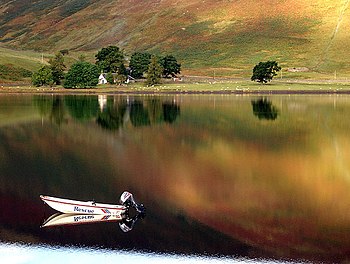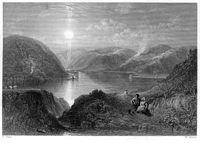St Mary's Loch
St Mary's Loch is a freshwater loch on the border of Peeblesshire with Selkirkshire. It is the largest natural loch in either county, and may be found lying is situated between Selkirk and Moffat, passed by the A708 road.
A small village, Cappercleuch, stands at the north-west corner of the loch.
The loch is three miles long and just over half a mile wide, and was created by glacial action during the last Ice Age. The loch is fed by the Megget Water, which flows in from the Megget Reservoir, and is the source of the Yarrow Water, which flows east from the loch to merge with the Ettrick Water above Selkirk.
About the loch
The loch takes its name from a church dedicated to St Mary which once stood on its northern shore, although only the burial ground is now visible.
Local legend has it that the loch has no bottom, and it is reputed to be the coldest loch in Scotland.
Immediately upstream from St Mary's Loch is the smaller Loch of the Lowes. Between the two is Tibbie Shiel's Inn, an 18th-century coaching inn, which was frequented by the Border poet James Hogg (1770–1835).[1] A statue of Hogg stands close to the inn.
The Southern Upland Way and Sir Walter Scott Way long-distance walking routes both pass the shores of the loch.
Links
| ("Wikimedia Commons" has material about St Mary's Loch) |
- Location map: 55°29’40"N, 3°11’10"W


